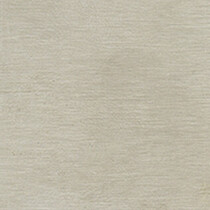H20 CUTS next-generation OMAX MAXIEM® 1530 Water Jet Cutter sets a higher standard for abrasive water jet machining
The OMAX MAXIEM 1530 can take a sheet size of 3.078 metres x 1.727 metres. It has a positional accuracy of +/- 0.051mm and a repeat ability of +/-0.025mm. It can cut up to 300mm thick.
Cutting with a waterjet produces a smooth edge with no burn marks, cracking or excess burrs. In addition, since waterjet is a cold-cutting method, there are no heat-affected zones.
WHAT MATERIALS CAN H20 WATER JET CUT?
H20 Cut can cut the following substrates and many more...
METALS
Waterjet machines cut all types of metals: hardened tool steel, aluminum, titanium, and a host of exotic metals that prove difficult to cut with other tools or processes. Cutting with a waterjet produces a smooth edge with no burn marks, cracking or excess burrs. In addition, since waterjet is a cold cutting method, there are no heat-affected zones.
NATURALS
Glass, stone, or wood, waterjets have the capability to fabricate with nearly any material under the sun. With specialized techniques such as low-pressure pierce, water-only cutting, and vacuum assistance a whole host of natural materials can be machined perfectly.
COMPOSITES
Abrasive waterjet has major advantages when Cutting carbon fiber. No need to change tooling. No special considerations or restrictions due to heat buildup. No melting. No hazardous fumes requiring costly air handling equipment. Any fiber-reinforced material, including Kevlar reinforced personnel armor, can be quickly and cleanly cut without the drawbacks that come with conventional machining.
PLASTICS & RUBBER
The material distortions associated with machining plastic on conventional CNC machines no longer comes into play when using the cold cutting method of a waterjet. The ability to easily machine foam, rubber, and acrylic as well as all the previously listed materials gives waterjets an edge as a multi-use value-add tool. The versatility of a waterjet is what makes it so essential to any machine shop.
H20 WATER JET CUTTING COMPARES FAVOURABLY TO OTHER CUTTING METHODS
Offering good accuracy, fast set-up time and fast cutting, while also cutting a wide range of materials with no Heat Affected Zone (HAZ) or change in material properties.
WHAT INDUSTRIES ARE USING H20 WATER JET CUT?
From jewelry making to aerospace, waterjets are involved in the production of many products you may not expect
Garden Art and Screens
Waterjet cutting can achieve intricate design pieces. We can create garden features, water features, indoor wall designs, glass, wood and metal panels for stairs and table tops.
Food Cutting & Food Processing Equipment
Waterjet cutting is the preferable method in the food processing industry. This is because this cutting method involves high sanitation, and preserves the integrity of the food without contaminating it.
This method is heavily used for meat processing, vegetable slicing, and manufacturing snacks and cake products.
Since waterjet cutting eliminates the need for manual tools such as knives, it significantly increases the safety of the workers in the food processing facility.
Rubber & Composites Cutting
Waterjet cutting is used to cut rubber and composite materials for boat shells, panel insulations, home insulations, personal watercraft bodies, etc.
The benefit that this method offers is that cutting can be achieved without melting the workpiece, and without releasing any toxic fumes.
Aerospace Industry
The aerospace industry involves working with toughened substances that require precise cuts. Waterjet cutting is used in the aerospace industry for all these requirements, especially when making turbine blades, parts of a jet engine, or cutting composite materials for aircraft.
Automotive Industry
Waterjet cutters are installed in the production line of the automotive industry. These cutters make the required incisions for fine engine components of automotive and other gear parts.
Architectural & Art Work
Waterjet cutting is commonly used for cutting fiberglass, metals, cement boards, and other materials used in architectural and construction work.
Complex architectural artwork in false ceilings and other installations is also created by waterjet cutters.
Since waterjet cutting does not cause any jagged edges, it is also used for the cutting of wallpapers.
Education & Research
Waterjet cutting is also used for making prototypes and models of products in the research phase. With angular cuts and high precision, the prototypes created with waterjet cutting can be made to look as intended by the imagination.
Medical & Surgical Equipment
The wide versatility and high cutting precision of waterjet cutting make it the perfect fit for cutting materials for medical and surgical equipment. These materials constantly evolve with engineering advancements, so the cuts can be made and modified as per requirements.
Electronics
Electronic and microelectronic components are highly sensitive to heat. Their electrical properties can change if heat-affected zones are created. This is why a highly precise cold cutting process like abrasive waterjet cutting technology is perfect for the electronics industry.
Metal Service Centres
Metal service centers require a cutting method that can work on a large area of material with a high cutting speed. This is why waterjet cutting is used in the industry extensively.
Another benefit of waterjet cutting is that it can perfectly work on metals that are poor conductors of electricity. For arc-based cutting technologies, that is not the case.
Oil & Gas
Abrasive waterjet cutting is utilized to cut materials like Inconel, Hastelloy, and stainless steel for oil and gas subsea equipment.
One of the major benefits is that since there are no heat-affect zones, the abrasive waterjet cut equipment is more reliable than other heat cutting alternatives.
Defence and Military
The complex components used in defense and military sectors are created by waterjet cutters. Usually, 5-axis or 6-axis cutters are employed for the purpose. Extra hard materials like kevlar composites are also cut through this method.
Mining
Abrasive waterjet cutting is extensively used for mining coal and other natural substances. In fact, specialized waterjet cutters for mining can cut stone up to a thickness of 100 feet!
158 Middle Renwick Road, Springlands, Blenheim, New Zealand
Ph: 027 328 2553
info@h20cut.co.nz

























